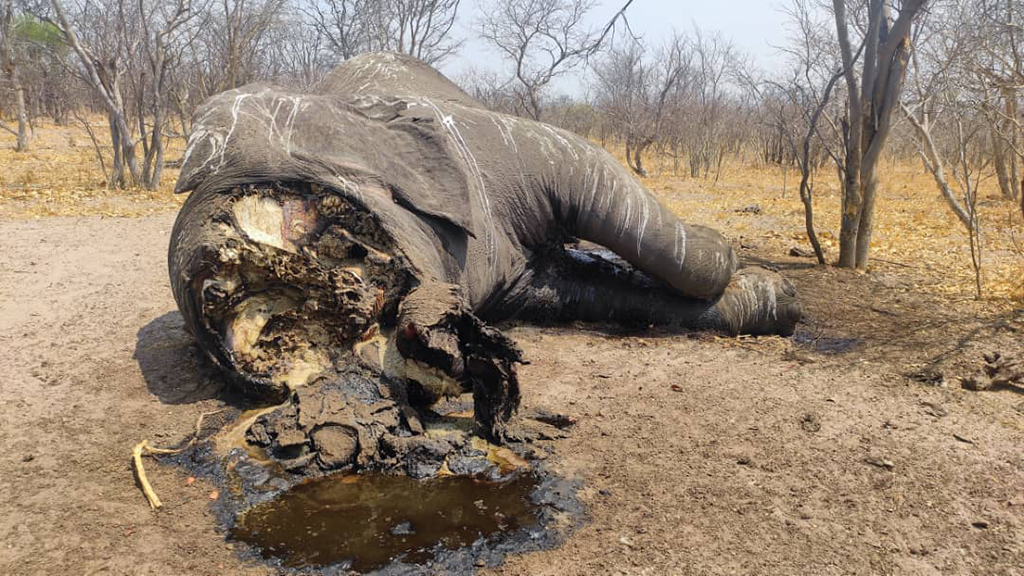
A recent spate of arrests of elephant poachers in Namibia has shone the light on an apparent increase in poaching of elephants in Botswana and led to questions surrounding the efficacy of anti-poaching systems in the region.
Africa Geographic is aware of at least four separate incidents within ten days this past month, where arrests were made in Namibia of poaching groups smuggling tusks. Seizures totalled up to at least 68 elephant tusks weighing almost a ton. Arrests occurred in Namibia’s Zambezi region, which borders Botswana and Zambia. Most tusks allegedly came from elephants recently poached in Botswana.
In one arrest operation, officials acted on information that the Zambezi region is being used as a transit route to smuggle the tusks of poached elephants from Botswana to Zambia.
In addition, Africa Geographic has learned that 25 carcasses of recently poached adult bull elephants have been identified in Botswana’s NG15 wildlife management area (Linyanti Reserve), south of the Savuti Channel, in October and November 2023. These carcasses showed signs of suspicious human activity: skulls had been chopped, tusks removed, and spinal cords cut. Another elephant carcass with tusks missing was seen in Chobe National Park. The age of these carcasses showed that they were poached between September and November this year.
“Over the last few years there have been several alleged cases involving poaching gangs from Zambia, some Namibians, and complicit Botswana enforcement personnel,” says Mary Rice, Executive Director of the Environmental Investigation Agency, “Most interdictions have taken place in Namibia, where it seems, the enforcement community are more effective – and proactive – in tackling the armed gangs involved; gangs who have moved through the Botswana landscape, laden down with firearms, expedition equipment and a massive haul of large tusks.”
Rice draws attention to the challenges of policing Botswana’s vast wilderness to intercept poaching incidents. “We know that poaching gangs have been exploiting the weak governance and enforcement of Botswana’s vast wilderness area for several years. Recent documented cases include significant rhino poaching incidents and interdictions of rhino horn. Still, with Botswana’s rhino population seriously depleted now, gangs are turning their sights increasingly to ivory,” says Rice.

With rhino poaching incidents in the region on the decline – most likely due to the depletion of rhino populations, poachers are seemingly turning to ivory to fill the gap.
Elephant poaching cases in Namibia are also on the increase. Spokesperson for Namibia’s Ministry of Environment, Forestry and Tourism (MEFT) Romeo Muyunda said in a recent interview that “while we are winning the fight against the illegal killing of rhinos, elephant poaching is picking up.” When the interview was conducted at the end of November, Namibia had recorded eight cases of elephant poaching for 2023 to date, an increase from four cases reported in 2022. Myunda noted that elephants poached in 2023 were killed in the Kavango and Zambezi region communal areas.

In 2018 and 2019, Africa Geographic reported on a spike in elephant poaching in Botswana, and it seems that a similar reoccurrence is brewing. But since 2019, little information has been published about elephant poaching in Botswana.
However, the 2022 KAZA Elephant Survey revealed that elephant carcasses made up an estimated 10.47% of the total population in the Kavango-Zambezi (KAZA) Transfrontier Conservation Area, which covers land in Angola, Botswana, Namibia, Zambia and Zimbabwe. Fresh and recent carcasses (elephants that died in the 12 months prior to the survey) represented 0.51% (1,165 elephants) of the total estimate. The highest ratio of fresh and recent carcasses was observed in Botswana (962 carcasses – 0.72%). A concentration of fresh and recent carcasses was identified in the border region between Botswana and Namibia along the Kwando-Linyanti-Chobe River system. This is a cautionary signal of a possible negative population trend requiring further assessment. Following the release of the results, Darren Potgieter, KAZA Elephant Survey coordinator, said, “Factors such as ageing populations, improved sampling methodologies, environmental conditions, and poaching could all be at play here.”
The Environmental Investigation Agency database indicates that there have been 21 seizures of ivory linked to Botswana since 2017. Key countries linked to the illegal ivory trade in Botswana include Namibia, Zambia and Zimbabwe; Namibia and Zimbabwe (and Zambia) are transit countries for ivory sourced from Botswana involving Zambian nationals, according to Rice.
“Whilst there was a lull in illegal trade during Covid, large seizures are now being made again, which indicates an ongoing illegal trade. Nigeria has emerged, and has been confirmed, as the key exit point for ivory and other wildlife en route to Asia,” says Rice. “It is also a consolidation point for products sourced from the region – Gabon, DRC – but also from southern Africa.”
The current state of affairs and alleged lack of action to subvert poaching in Botswana has conservationists questioning the Botswana government’s stance.

“The poachers in Botswana seem to be able to pick and choose among the largest elephants in their area of operation… indicative that these poachers can take their time, travel around, follow elephant herds, camp out, select what they want,” said conservationist, Dr Pieter Kat, in a recent statement published on social media. “I am of the opinion that the poachers have established a collaborating network of people in Botswana facilitating poaching gunners, transporters, suppliers of food and other necessities to the ‘resident’ teams.”
Meanwhile, in South Africa, elephant poaching incidents are also on the increase. During the 2022-2023 financial year, Kruger National Park lost 32 elephants to poaching, compared to nine elephants poached in the previous year. SANParks, however, reported that this poaching was “driven largely by bushmeat, rather than ivory, demand.” One elephant was also poached in Mapungubwe National Park, which borders Botswana and Zimbabwe.
* AG contacted Boswana’s Department of Wildlife and National Parks for comment but received no response.
To comment on this story: Login (or sign up) to our app here - it's a troll-free safe place 🙂.![]()





